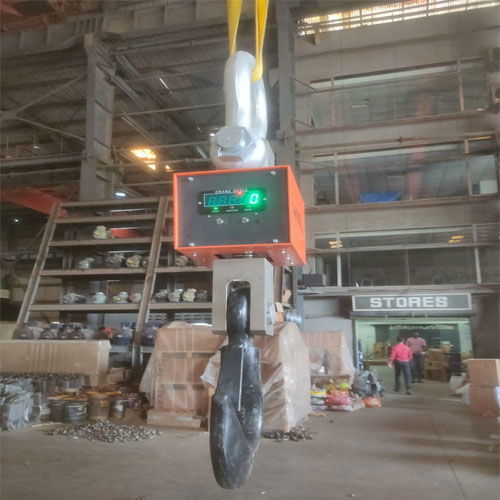Crane scale is a type of specialist scale used in industrial environments, especially for the purpose of weighing large objects that require the use of cranes or other lifting apparatuses. In general, these scales are strong and resilient enough to survive challenging conditions and frequent use. They frequently possess traits like:
Table of Contents
- High Weight Crane Scale
- How To Use Crane Scale
- Conclusion
High Weight Crane Scale
Depending on the model, industrial crane scales can weigh loads ranging from several hundred kg to several tons.
1 . Accuracy: They are made to measure weight accurately, which is essential for both safety and effectiveness when lifting anything.
2. Remote Display: To ensure safety during lifting operations, many crane scales come equipped with a remote display device that enables operators to read the weight from a distance.
3. Multiple Units: They are adaptable for a range of applications since they can typically display weight in many units, including pounds, Newtons, and kilograms.
Built-in safety features: To prevent mishaps when lifting, these scales frequently include features like overload protection, loud alarms, and safety hooks.
Some contemporary crane scales come equipped with wireless connectivity, which enables data to be sent for tracking and recording reasons to a computer or mobile device.
How To Use Crane Scale
Digital electronic crane scales are essential tools for industries that require accurate and efficient weighing of heavy loads during lifting operations
Electronic industrial heavy crane scale involves several steps to ensure accurate measurements and safe lifting operations
Preparation:
Attach the crane scale securely to the lifting apparatus (e.g., crane hook) using appropriate hardware and ensure there are no twists or knots in the lifting sling or chain.
Power On:
If the crane scale is battery-powered, ensure the batteries are sufficiently charged or replace them if necessary. If it’s mains-powered, connect it to a power source.
Turn on the crane scale using the power switch or button.
Zero Calibration:
Before lifting any load, perform a zero calibration to ensure accurate measurements. Most crane scales have a tare or zero function that allows you to reset the scale to zero with no load attached.
Hang the crane scale without any load attached and press the tare or zero button to reset the display to zero.
Attach the Load:
Carefully attach the load to the lifting apparatus (hook or shackle) of the crane scale. Ensure the load is centred and securely attached to prevent any swinging or shifting during lifting.
Lift the Load:
Slowly and smoothly lift the load using the crane or hoist. Avoid sudden movements or jerks, as these can affect the accuracy of the weight measurement and may pose a safety risk.
Monitor the weight reading on the crane scale display as the load is lifted. Ensure that it remains within the scale’s weight capacity and does not exceed any safety limits.
Read the Weight:
Once the load is lifted to the desired height, allow it to stabilize, and then read the weight displayed on the crane scale.
Take note of the weight reading for record-keeping or further processing.
Lower the Load:
After obtaining the weight measurement, carefully lower the load back to the ground or onto a stable surface.
Ensure that the load is lowered smoothly and under control to prevent accidents or damage to the equipment.
Power Off:
Once you have finished using the crane scale, power it off to conserve battery life or electricity.
.Conclusion
When choosing an industrial crane scale, factors to consider include the weight capacity needed, the accuracy required, the environmental conditions it will be used in (e.g., indoor vs. outdoor), and any specific features required for your particular application.
.png)
